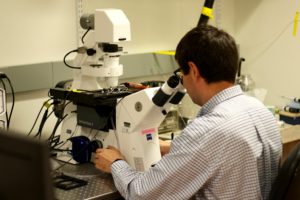What is Mitochondrial Disease
Mitochondrial disease results from failures of the mitochondria, which are specialized compartments present in almost every cell of the body. Mitochondria are called the “powerhouses” of the body since they are responsible for creating more than 90% of the energy needed by the body to sustain life and support growth. When mitochondria are not functioning correctly then the organs in our body begin to suffer.
A large number of people, especially children, suffer from defects in the mitochondria. According to the United Mitochondrial Disease Foundation, 1,000 to 4,000 children in the U.S. each year are born with a mitochondrial disease. Depending on which cells are affected, a child can have strokes, seizures, gastrointestinal problems, blindness, deafness, muscle failure, diabetes, developmental delays, heart and kidney problems, immune system problems and liver disease. Whole systems within a body can begin to fail and the life of the child is compromised, changed or ended.
Currently, there is no cure for mitochondrial disease and even finding medical treatments is a challenge. Today, there are no FDA-approved drugs targeted specifically for mitochondrial disease. Doctors are left with prescribing vitamin cocktails to boost cell function (which may or may not have an impact), along with making suggestions about diet, avoiding stress and extremes in heat or cold and providing interventions that can only treat the symptoms but not the underlying cause.
While mitochondrial disease primarily affects children, adult onset is becoming more common. Evidence increasingly indicates that the aging process itself may result from deteriorating mitochondrial function, which is implicated in other complex diseases such as diabetes, cancer, and heart disease.
The researchers and doctors we support at Seattle Children’s are focused on expanding the evidence-base to diagnose and treat mitochondrial disease with improved standards of care, while continuing to search for a cure.


